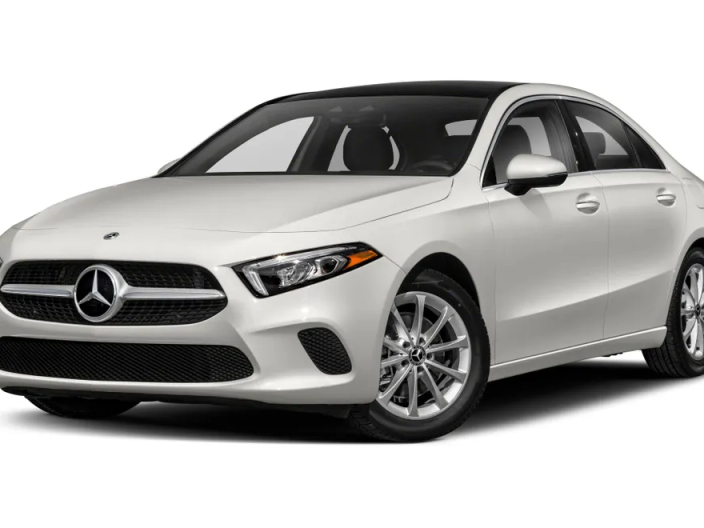Q
how much does service a cost for mercedes benz in malaysia
In Malaysia, Mercedes-Benz service costs can vary quite a bit depending on the model, how old the car is, and exactly what services you need. Generally speaking, an A-Service – that's the basic one with oil and oil filter changes – will run you around 800 to 1,500 ringgit. Step up to a B-Service, which includes more thorough checks and replacements like air filters and brake fluid, and you're looking at roughly 1,500 to 3,000 ringgit. Of course, you'll want to check with your local authorized service center for the exact quote since prices can differ slightly between locations.
Mercedes does offer various service packages in Malaysia too. You can usually opt to pay upfront or spread the cost in installments. Keep an eye out for dealer promotions as well – sometimes they'll throw in free inspections or discount vouchers. Your best bet is to follow official channels or swing by your nearest Mercedes service center to get the latest pricing info.
Remember, regular maintenance isn't just about keeping your car running smoothly – it helps extend its lifespan too. This is especially true for luxury vehicles like Mercs. Sticking to the manufacturer's recommended service schedule can save you from bigger, costlier repairs down the line. If you're watching your budget, consider investing in one of Mercedes' prepaid service plans. They often work out cheaper than paying per service and give you price certainty, which is always good peace of mind.
Special Disclaimer: This content is published by users and does not represent the views or position of PCauto.
Related Q&A
Q
mercedes a250 price
In recent years, the Mercedes-Benz A250 has been priced around RM250,000 to RM300,000 in the Malaysian market, with the exact figure varying depending on the model year, specifications, and dealer promotions. As Mercedes-Benz's entry-level performance model, the A250 packs a 2.0-liter turbocharged engine churning out 224 horsepower, paired with a 7-speed dual-clutch transmission that strikes a nice balance between sporty performance and fuel efficiency. It's pretty popular over here, especially among young buyers who want that premium badge along with some driving fun.
Beyond the A250, Mercedes-Benz offers more accessible entry points in Malaysia like the A200, which comes with a friendlier price tag. When looking to buy, it's worth keeping an eye on the latest deals from official dealers – things like low-interest financing or free service packages can really help cut down the cost of ownership. Also, remember that Malaysia's import duties on cars do impact the final price of luxury vehicles, so the on-the-road price might end up a bit higher than the sticker price.
For those working with a tighter budget, the used car market is worth considering too. A 3-year-old A250, for example, can usually be picked up at a much more attractive price.
Q
mercedes a250 malaysia price
In Malaysia, the latest price tag for the Mercedes-Benz A250 typically sits between RM250,000 and RM300,000. Of course, the exact figure can vary depending on the spec level, optional extras you tick, and any ongoing dealer promotions.
Slotting in as Mercedes' entry-level performance model, the A250 packs a punch with its 2.0-liter turbocharged engine, churning out a solid 224 horsepower. Paired with a 7-speed dual-clutch transmission, the power delivery is pretty impressive—definitely one for the young, driving enthusiasts out there who crave a bit of fun behind the wheel.
Inside, you’re greeted with Mercedes’ latest MBUX infotainment system, which handles both voice commands and touchscreen inputs like a pro, giving the cabin a seriously tech-forward vibe. On the safety front, the A250 doesn’t skimp either, coming standard with handy features like Active Brake Assist and Lane Keeping Assist to boost on-road security.
For Malaysian buyers, the A250 isn’t just a badge of luxury—it’s a well-rounded pick that blends performance with everyday practicality. If your budget stretches a bit further, consider splurging on the AMG Line package or upgrading the sound system to take the driving experience up a notch.
One last tip: when you’re ready to buy, shop around at a few dealerships and keep an eye out for official promotions—you might just score a nice little discount.
Popular Cars
Model Year
Car Compare
Car Photo
Latest Q&A
Q
Why is gasoline a fuel?
Gasoline can serve as a fuel because it possesses core properties suitable for providing power and the ability to convert energy. It is a hydrocarbon mixture obtained through fractional distillation and cracking of petroleum, mainly containing C5-C12 aliphatic hydrocarbons, naphthenes, and a small amount of aromatic hydrocarbons. It is characterized by volatility and flammability, with low viscosity facilitating smooth flow in injection systems, and rapid evaporation enabling quick formation of a uniform combustible mixture with air. Gasoline stores chemical energy; when ignited by a spark plug in the engine combustion chamber, it burns rapidly to release a large amount of thermal energy, which pushes the piston to move and converts into mechanical energy, providing power for vehicles such as cars and motorcycles. In addition, the anti-knock property of gasoline (measured by octane number) can adapt to engines with different compression ratios, ensuring stable operation and performance; it has a high energy density, storing more energy per unit volume, good combustion efficiency, and high availability of gas stations for convenient use. Therefore, it has become the main fuel for spark-ignition internal combustion engines and is widely used in transportation and related fields.
Q
What are 1st, 2nd, and 3rd family gases?
The first, second, and third family cars are vehicle categories classified based on the stages of family car-purchasing needs. The first family car is an entry-level economical model, such as the Perodua Axia and Proton Saga, priced at approximately 30,000 to 50,000 Malaysian ringgit. It emphasizes fuel efficiency and practicality, making it suitable for young families purchasing a car for the first time. The second family car falls into the mid-range category, offering more space and enhanced features, such as the Proton Persona and Toyota Vios, priced between 60,000 and 100,000 Malaysian ringgit, catering to the comfort requirements of growing families. The third family car is a premium model or an MPV/SUV, such as the Proton Exora and Honda CR-V, priced above 100,000 Malaysian ringgit. It boasts spacious interiors and upscale configurations, ideal for larger families or long-distance travel. Malaysian consumers typically prioritize fuel efficiency, maintenance costs, and space when selecting a vehicle. Families at different life stages adjust their car choices accordingly. For instance, small families may begin with the first category, upgrade to the second after having children, and larger families often opt for the third category.
Q
What are the four types of natural gas?
Natural gas can be classified into four main types based on its source: gas field gas (pure natural gas), associated petroleum gas, condensate field gas, and coalbed methane. Gas field gas is directly extracted from gas wells, typically containing over 90% methane with minimal impurities. Associated petroleum gas is a byproduct of oil extraction, containing not only methane but also significant amounts of other hydrocarbons such as ethane and propane. Condensate field gas yields light hydrocarbon fractions during extraction, characterized by a high methane content and small quantities of heavier hydrocarbons like pentane. Coalbed methane is extracted from underground coal seams, primarily consisting of methane and nitrogen, and must have a methane content exceeding 40% to be utilized as fuel. Due to compositional differences, these natural gas types vary in calorific value and applications. The first three are commonly used for urban gas supply, whereas coalbed methane requires purification before effective utilization. As a clean and efficient energy source, the development and utilization of these diverse natural gas types play a crucial role in optimizing energy structure.
Q
What are the three types of fuel gas?
Common fuel gases are mainly divided into three types: natural gas, liquefied petroleum gas (LPG), and manufactured gas. Natural gas is a flammable gas existing in nature, with methane as its main component. It is colorless and odorless, leaves no residue after combustion, and has high thermal efficiency, making it a clean energy source. Liquefied petroleum gas is a by-product of the petroleum refining process, whose main components include propane and butane. It is a gas at room temperature but can be converted into liquid through pressurization and cooling, facilitating storage and transportation. Manufactured gas is generated through thermochemical reactions of fossil fuels such as coal or petroleum under specific conditions, with main components including hydrogen, carbon monoxide, and methane. It has low production costs but produces certain pollution after combustion, so ventilation should be ensured during use. These three fuel gases have different application scenarios in the energy supply field, and their calorific values and usage characteristics also vary. For example, the calorific value of natural gas is approximately 33,000-36,000 kcal per cubic meter, that of LPG is about 90,000 kcal per kilogram, and that of manufactured gas is roughly 3,500-4,200 kcal per cubic meter. The different calorific values make them suitable for different energy demand scenarios such as households and industries.
Q
Is unleaded petrol a gas?
Unleaded gasoline is not a gas but a liquid fuel. It refers to gasoline with a lead content of less than 0.013 grams per liter and without the addition of tetraethyl lead as an anti-knock additive during the refining process. Its octane rating is typically 95, slightly lower than the 97 of leaded gasoline. The use of unleaded gasoline can effectively reduce emissions of harmful substances such as hydrocarbons, carbon monoxide, and nitrogen oxides in vehicle exhaust, thereby lowering pollution risks including smog, toxic gases, and acid rain. However, it should be noted that while unleaded gasoline contains no artificially added lead, it still retains trace amounts of lead from crude oil. Additionally, its combustion releases gases, particulate matter, and condensates, with particles smaller than 2 microns in diameter being particularly prone to prolonged suspension in the air and subsequent human inhalation. Thus, potential health impacts remain a concern. Currently, most vehicles can use unleaded gasoline directly, though certain models require selecting the appropriate octane grade as recommended by the manufacturer to ensure optimal engine performance and longevity.
View MoreRelated News

Mercedes-Benz A-Class: Stylish Design That Redefines Luxury
JamesMay 6, 2025

Brand New Mercedes-Benz GLC with EQ Technology Coming Soon: A Larger, Faster, and More Efficient Luxury All-Electric SUV
LienDec 11, 2025

Mercedes-Benz GLC200 4Matic debuts, offering a more accessible entry price at RM329,888
LienDec 11, 2025

Mercedes-Benz invests in an autonomous driving technology company under Geely named Qianli
AshleySep 25, 2025

Benz launches its first car equipped with solid-state batteries, capable of traveling 1,205 kilometers on a full charge
WilliamSep 10, 2025
View More










Pros
Cons